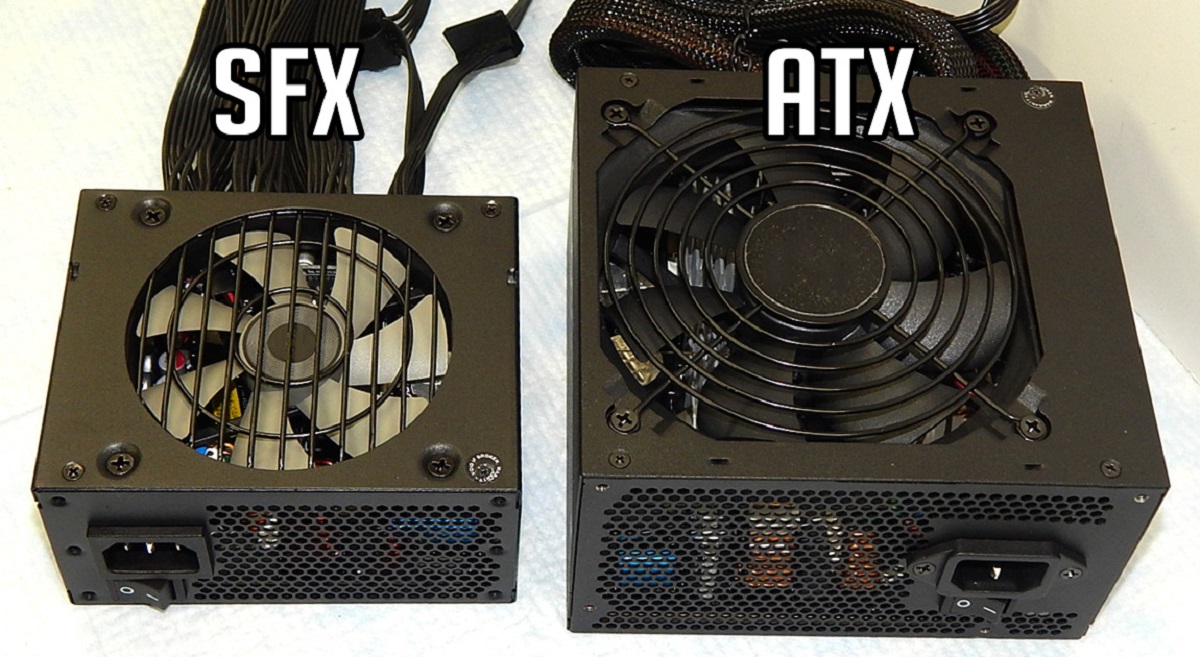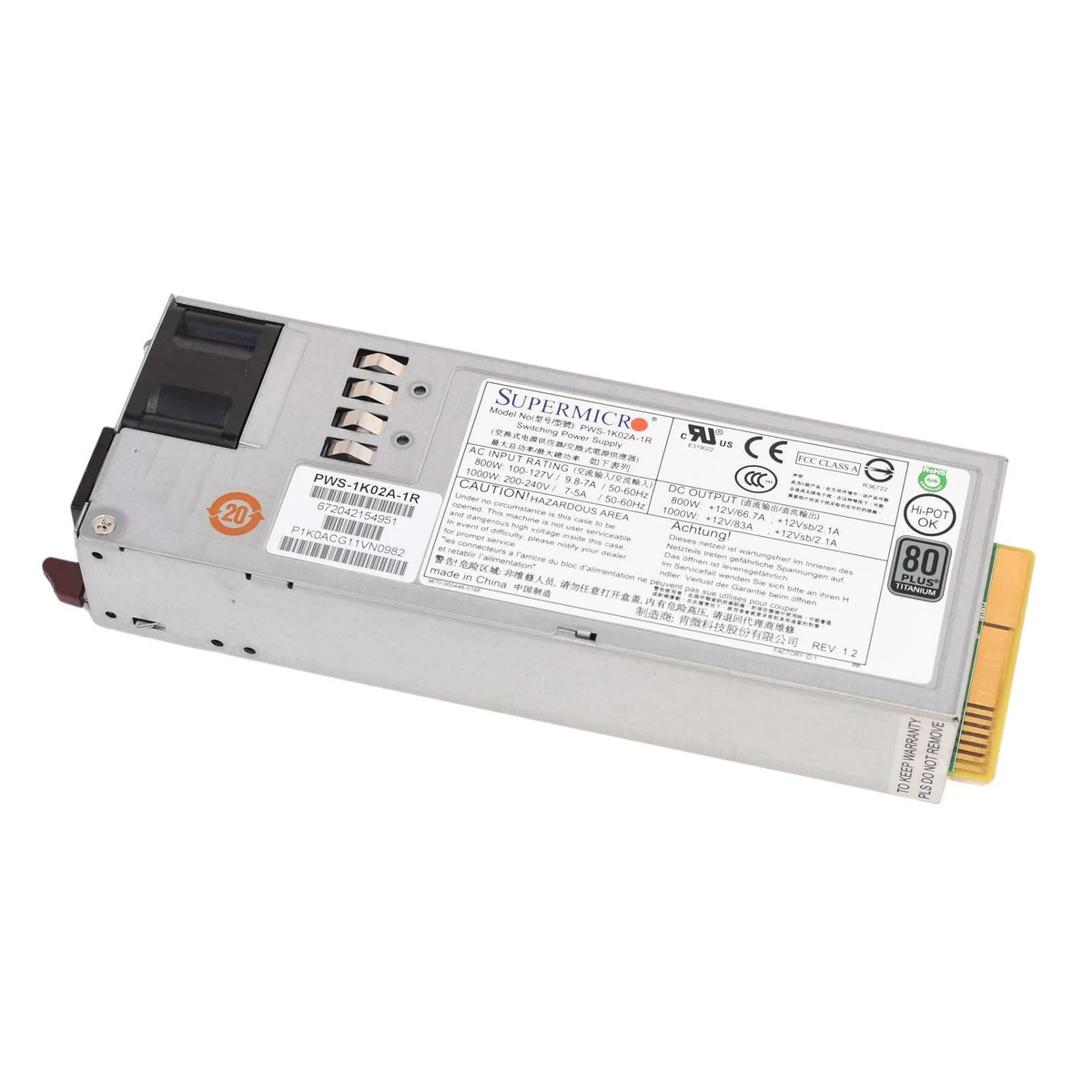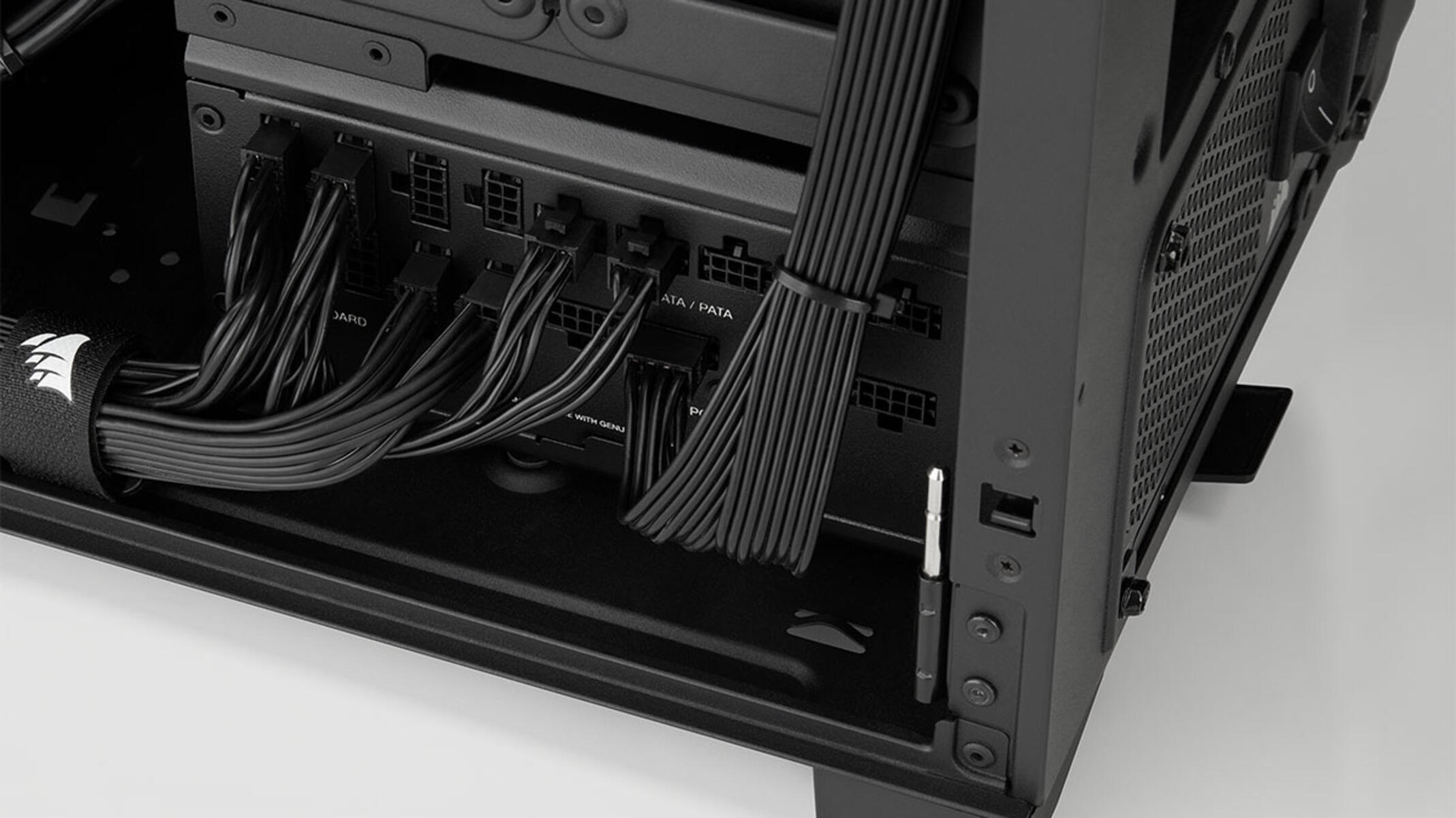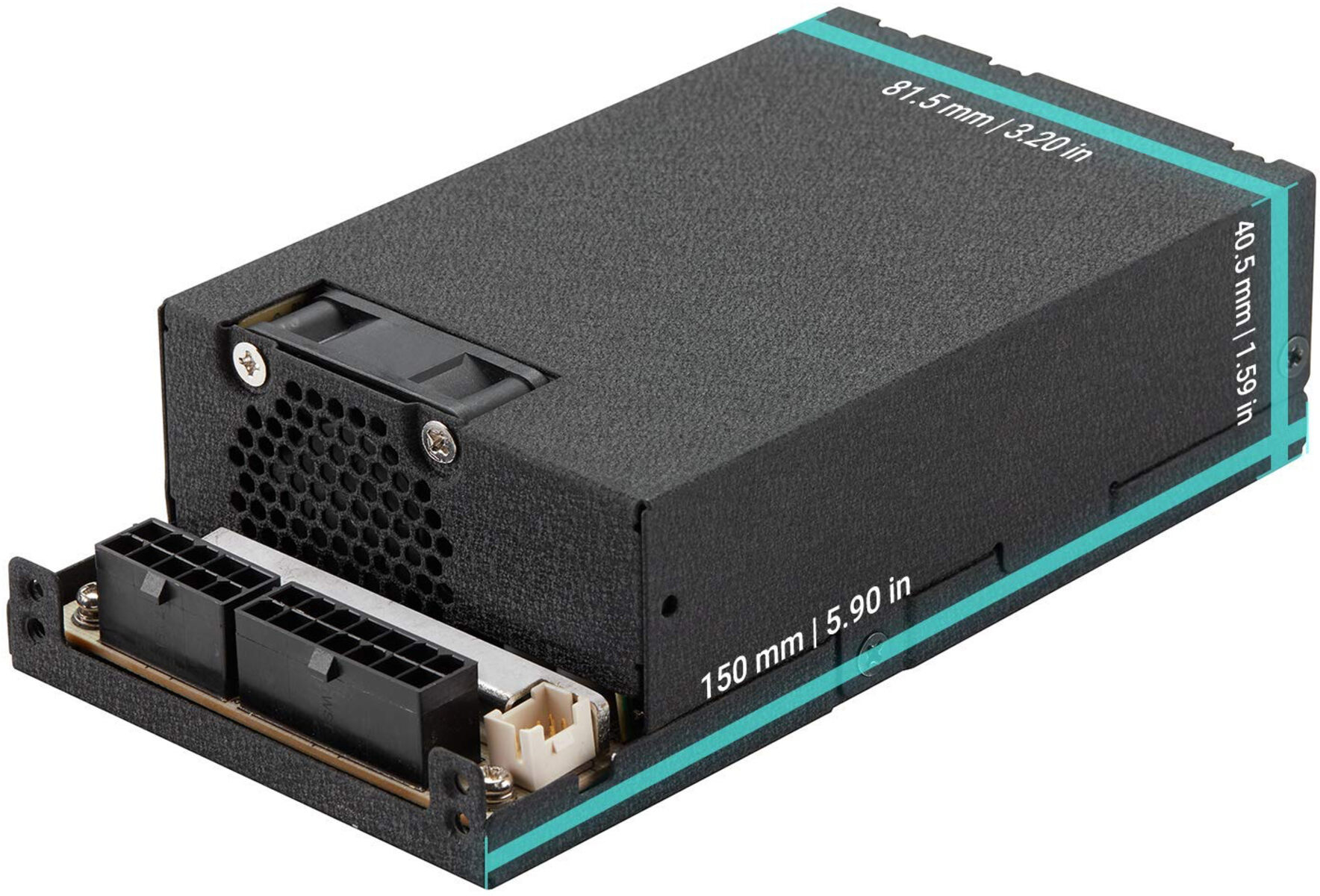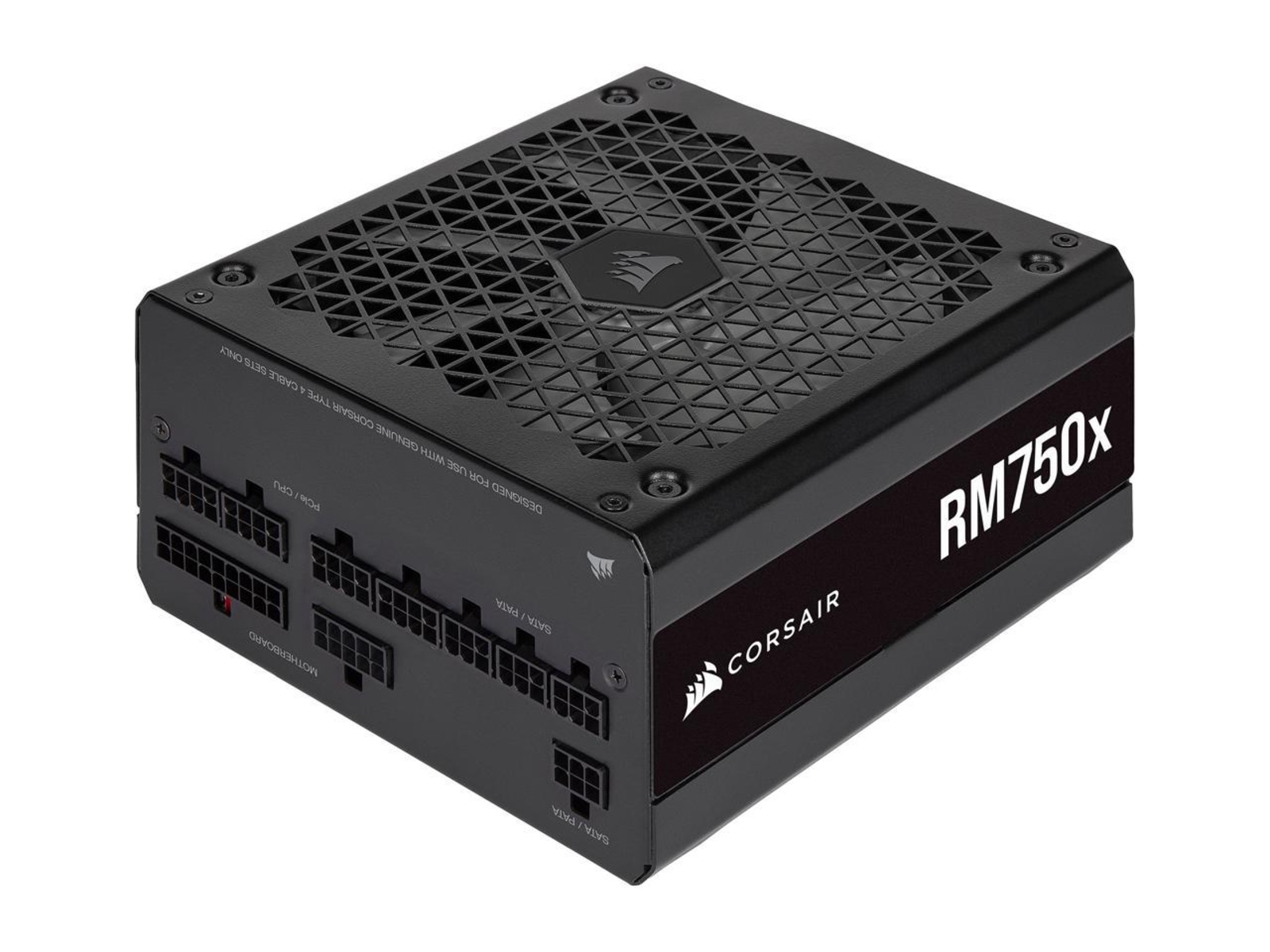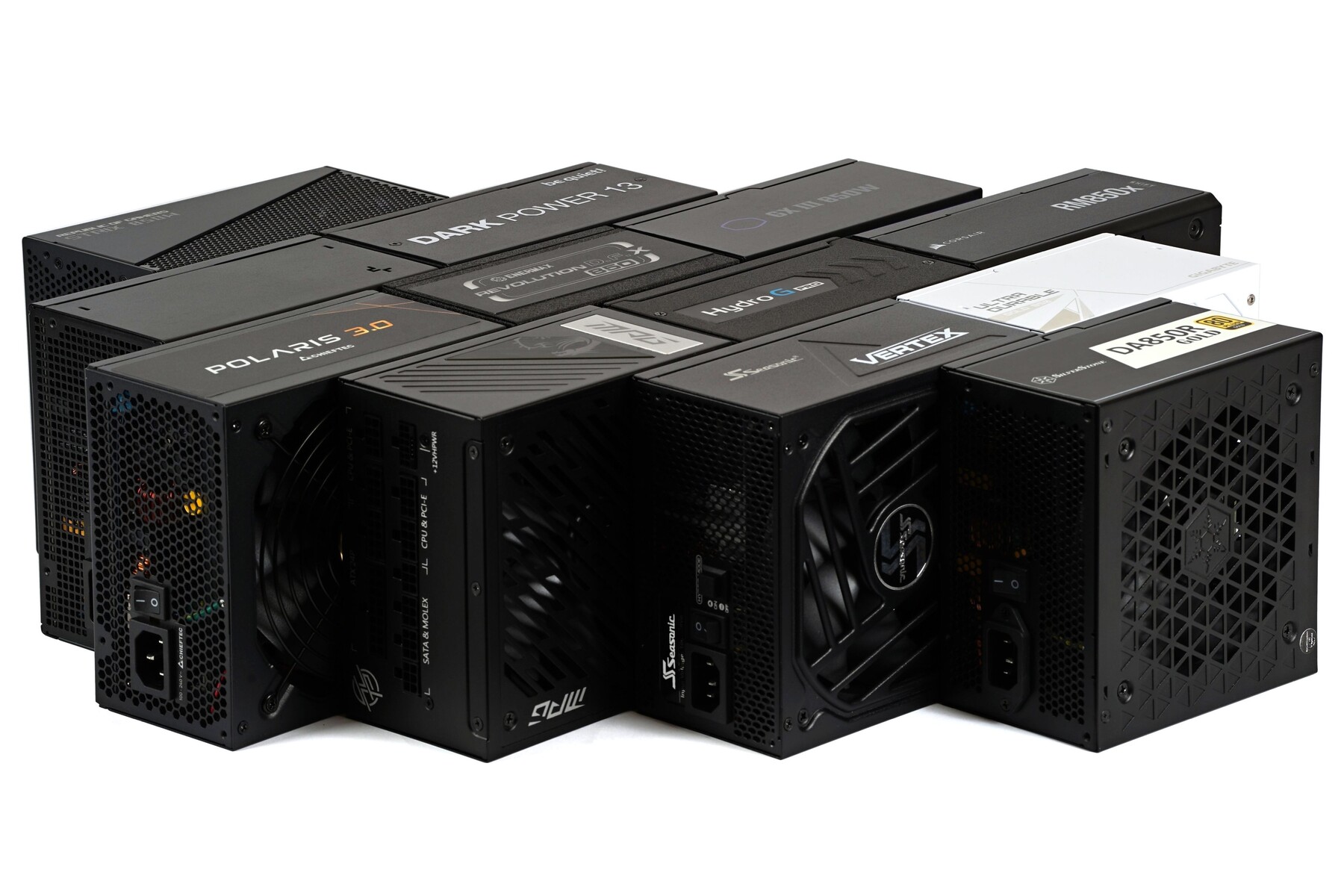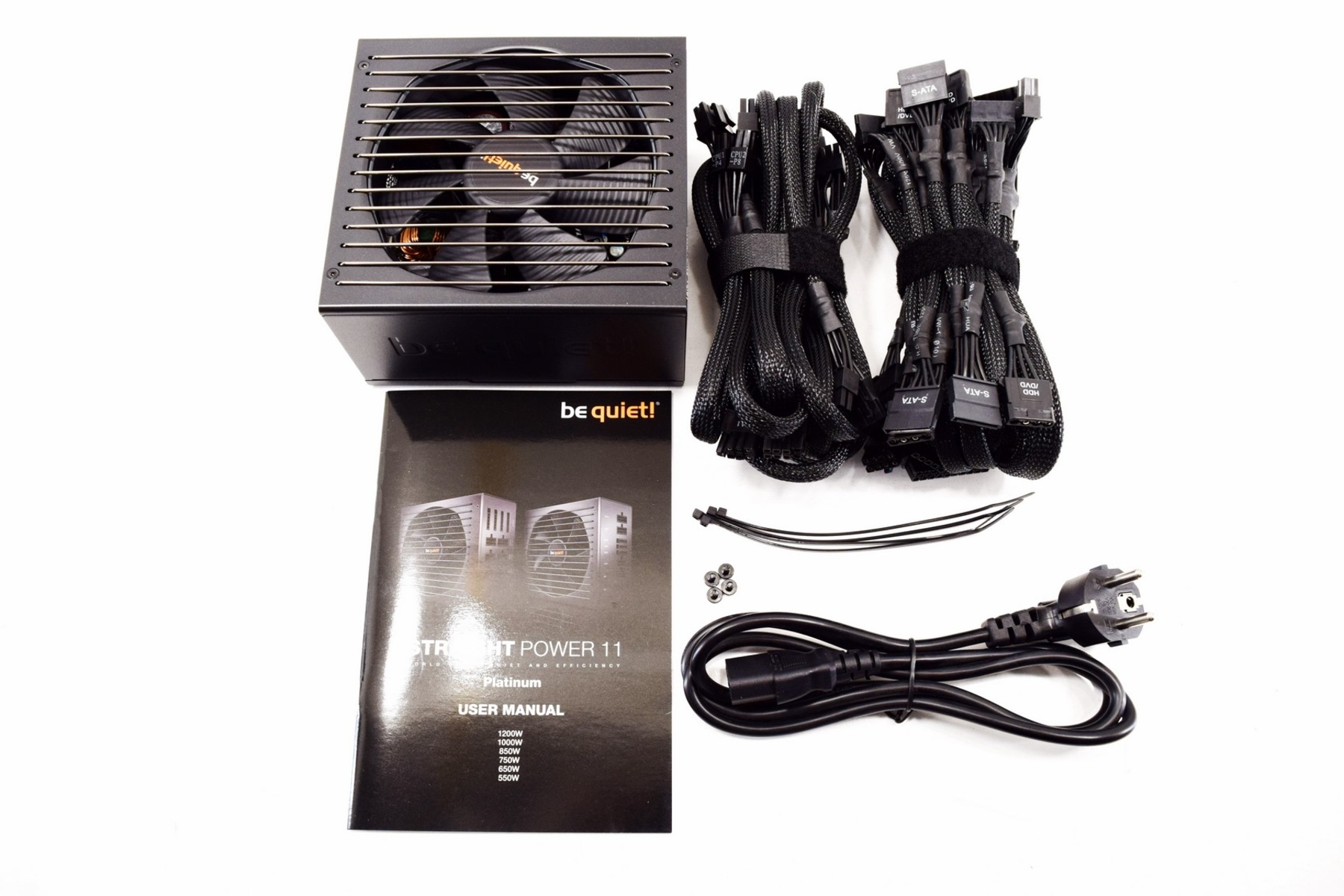Introduction
Welcome to the world of computer hardware, where every component plays an essential role in powering your system. One such crucial component is the power supply unit or PSU. Among the various specifications of a PSU, one important factor to consider is its size.
ATX PSU size refers to the physical dimensions of the power supply unit, specifically its length, width, and height. It determines whether the PSU will fit properly inside your computer case and connect to the motherboard.
Understanding the ATX PSU size is vital for anyone building or upgrading a computer, as using an incompatible PSU can lead to various issues, ranging from a non-functional system to potential damage to the components.
While the ATX PSU size plays a significant role, it is not the only relevant factor. Other form factors, such as micro ATX and mini ITX, cater to different case sizes and have different PSU requirements.
In this article, we will explore what ATX PSU size actually means, why it is important, different standard ATX sizes, as well as considerations for compatibility. So, if you’re ready, let’s dive into the world of ATX PSU sizes and discover how to choose the right one for your computer build.
What is ATX PSU Size?
The ATX PSU size refers to the physical dimensions of the power supply unit that is used in computer systems. The term “ATX” stands for “Advanced Technology eXtended,” which is a specification introduced by Intel in the mid-1990s to standardize the design and dimensions of computer components.
When it comes to the size of the PSU, it refers to the length, width, and height of the unit. These dimensions are crucial because they determine whether the PSU will fit properly into the computer case and connect to the motherboard.
Typically, the ATX PSU size is standardized to fit most modern computer cases. The dimensions are measured in millimeters, and the most common size for ATX power supplies is 150mm x 86mm x 140mm (L x W x H). It’s important to note that these dimensions can vary slightly based on the specific manufacturer or model.
In addition to the standard ATX size, there are also variations such as the compact ATX size, which is smaller and designed for mini ITX or micro ATX cases. These smaller sizes allow for more flexibility when it comes to building in compact spaces.
Overall, the ATX PSU size plays a crucial role in determining compatibility with your computer case. Choosing a PSU that is too large or too small can result in difficulties during installation and may even prevent the PSU from fitting inside the case at all. It’s an important factor to consider when selecting or upgrading your power supply.
Why is ATX PSU Size Important?
The importance of ATX PSU size cannot be overstated when it comes to building or upgrading a computer system. Here are a few key reasons why ATX PSU size is crucial:
- Compatibility: The ATX PSU size determines if the power supply unit can fit inside the computer case. Different cases have varying dimensions and support different PSU sizes. Choosing a PSU that matches the case’s specifications ensures a proper fit and prevents any installation issues.
- Adequate Power Delivery: ATX PSU size also affects the power delivery capacity of the unit. Larger-sized PSUs generally have more room for components and better power management features. This allows for efficient and stable power delivery to the motherboard and other components, ensuring optimal performance and avoiding system instabilities.
- Cable Management: A properly sized ATX PSU allows for better cable management. If the PSU is too large, it can obstruct the routing of cables and make it challenging to achieve a clean and organized build. On the other hand, a PSU that is too small may not have enough connectors to accommodate all the components in your system.
- Heat Dissipation: The size of the PSU also impacts heat dissipation. Larger PSUs often come with larger and more efficient cooling fans. This helps to keep temperatures under control, preventing overheating and extending the lifespan of the PSU and other components.
- Future Upgrades: Considering the ATX PSU size is important for future upgrades as well. If you plan on adding more components, such as high-end graphics cards or additional storage drives, it is crucial to have sufficient power and physical space to accommodate these upgrades.
By paying attention to the ATX PSU size, you can ensure compatibility, optimal power delivery, efficient cable management, improved cooling, and flexibility for future upgrades. It’s a critical aspect of building or upgrading a computer system and should not be overlooked.
Standard ATX Sizes
When it comes to standard ATX sizes, there are a few common dimensions that you should be aware of. While the most widely used size is the standard ATX, there are variations that cater to specific needs. Here are the main standard ATX sizes:
- ATX: The standard ATX size typically measures 150mm x 86mm x 140mm (L x W x H). It is the most common size and is compatible with the majority of computer cases. ATX power supplies are capable of delivering ample power to support high-performance systems with multiple components.
- Micro ATX: Micro ATX power supplies are smaller than standard ATX sizes, measuring around 125mm x 63mm x 100mm (L x W x H). They are designed for compact computer cases and motherboards. Micro ATX PSUs are suitable for systems with fewer components and lower power requirements.
- Flex ATX: Flex ATX power supplies are even smaller, measuring approximately 150mm x 81.5mm x 40.5mm (L x W x H). They are commonly used in slim or compact form factor cases. Flex ATX PSUs are ideal for small builds, such as home theater PCs and small office systems.
It’s important to note that while these standard sizes exist, there may be slight variations among manufacturers. It’s always recommended to check the specific dimensions and specifications of the power supply unit before making a purchase.
Understanding the standard ATX sizes is essential to ensure compatibility with your computer case and motherboard. Choosing the appropriate size not only ensures a proper fit but also allows for efficient cooling and cable management.
Next, let’s explore other form factors that you may encounter when selecting a power supply unit for your build.
Other Form Factors
In addition to the standard ATX sizes, there are several other form factors that you may come across when choosing a power supply unit for your computer build. These form factors cater to different case sizes and have specific PSU requirements. Let’s take a closer look at some of the common ones:
- Mini ITX: Mini ITX is the smallest form factor commonly used in computer cases. These cases are compact and designed for small systems. Mini ITX power supplies are smaller in size, usually measuring around 125mm x 63mm x 100mm (L x W x H). They are specifically designed to fit seamlessly into Mini ITX cases and provide sufficient power for low-profile builds.
- Micro ATX: Micro ATX is a form factor that falls between Mini ITX and standard ATX. Micro ATX cases are larger than Mini ITX but smaller than standard ATX cases. Micro ATX power supplies, as mentioned earlier, are smaller in size compared to standard ATX, making them suitable for compact builds with limited space.
- SFX: SFX stands for Small Form Factor, and it is designed for systems that require a compact power supply unit. SFX power supplies are smaller than standard ATX sizes and often used in small form factor cases with limited space. They typically measure around 125mm x 63mm x 100mm (L x W x H) and offer lower power output compared to larger ATX PSUs.
- TFX: TFX, or Thin Form Factor, power supplies are commonly used in slim desktop cases or low-profile systems. These PSUs have a narrow design and are typically used in office desktops or small form factor builds with limited space. TFX power supplies usually measure around 175mm x 85mm x 65mm (L x W x H).
These different form factors are designed to match specific case sizes and provide power solutions for various types of builds. It’s important to select a power supply unit that matches the form factor of your computer case to ensure compatibility and proper fit.
Now that we’ve explored some of the common form factors let’s move on to discussing ATX PSU compatibility considerations.
ATX PSU Compatibility
When it comes to ATX PSU compatibility, there are a few factors to consider to ensure that the power supply unit will work seamlessly with your computer components:
- Form Factor: The first consideration is the form factor compatibility. As discussed earlier, different case sizes require specific PSU form factors, such as ATX, micro ATX, mini ITX, SFX, or TFX. It’s important to choose a PSU that matches the form factor of your computer case to ensure a proper fit and connection.
- Power Output: Another crucial factor to consider is the power output of the PSU. The power output is measured in watts (W) and represents the maximum amount of power that the PSU can deliver to your computer components. It’s important to select a PSU with sufficient power output to support your system’s requirements. Ensure that the PSU can provide enough power for your CPU, graphics card, storage drives, and other components.
- Connectors: ATX PSUs come with various connectors that provide power to different components of your computer. Check if the PSU has the necessary connectors for your motherboard, graphics card, storage drives, and other peripherals. Common connectors include 24-pin ATX power connector, 4/8-pin CPU power connector, PCI-E power connectors for graphics cards, SATA power connectors for storage drives, and Molex connectors for peripherals.
- Efficiency and Certification: Consider the efficiency rating and certifications of the PSU. Higher efficiency means that the PSU wastes less energy and produces less heat. Look for PSUs with 80 Plus certifications, such as 80 Plus Bronze, Silver, Gold, or Platinum, as they signify higher efficiency levels.
- Modularity: ATX PSUs come in different modular configurations, such as non-modular, semi-modular, and fully modular. Modular PSUs allow you to detach unused cables, improving cable management and airflow within the case. Consider your preference for cable management and choose the appropriate PSU type accordingly.
By ensuring compatibility in terms of form factor, power output, connectors, efficiency, and modularity, you can select an ATX PSU that perfectly fits your system’s requirements and maximizes performance.
Now that we’ve discussed ATX PSU compatibility considerations, let’s move on to the next section to learn how to choose the right ATX PSU size for your build.
Choosing the Right ATX PSU Size for Your Build
Choosing the right ATX PSU size is essential to ensure optimal compatibility and performance for your computer build. Here are some key factors to consider when selecting the appropriate ATX PSU size:
- Case Compatibility: The first step is to determine the form factor and dimensions of your computer case. Check if it supports standard ATX, micro ATX, mini ITX, or any other specific form factor. This will help you identify the appropriate PSU size that will fit into your case.
- Power Requirements: Assess the power requirements of your system. Consider the CPU, graphics card, storage drives, and any additional peripherals that you plan to include. Calculate the estimated power consumption to ensure that the selected ATX PSU size can provide sufficient power to all components with some room for future upgrades.
- Future Expansion: Consider any potential future upgrades or additions you may make to your system. If you plan to add more powerful components or additional drives, it’s a good idea to choose a slightly higher wattage PSU to accommodate these upgrades without any issues.
- Efficiency and Certification: Look for ATX PSUs with higher efficiency ratings, such as 80 Plus Bronze, Silver, Gold, or Platinum. Higher efficiency translates to lower energy waste and reduced heat production. This not only helps save on electricity bills but also contributes to a more sustainable and environmentally friendly system.
- Budget Considerations: Set a budget for your PSU and consider the available options within that price range. While it’s important to invest in a reliable and high-quality PSU, there are often choices available at different price points to suit your budget.
By carefully considering these factors, you can choose the right ATX PSU size that not only fits your case but also meets the power requirements of your system while considering potential future upgrades. Remember to research and read reviews to ensure that the chosen PSU is reliable and reputable.
Now that we’ve covered the considerations for choosing the right ATX PSU size, let’s wrap up this article with a brief summary.
Conclusion
Understanding the importance of ATX PSU size is crucial when it comes to building or upgrading a computer system. The ATX PSU size determines compatibility with your computer case, ensures proper power delivery, and allows for efficient cable management and heat dissipation. By choosing the right ATX PSU size, you can avoid installation issues, ensure optimal performance, and have room for future upgrades.
Standard ATX sizes, such as ATX, micro ATX, and Flex ATX, cater to different case sizes and power requirements. It’s essential to select a size that matches your case and offers sufficient power for your components.
It’s also important to consider other form factors, such as mini ITX, SFX, and TFX, if you are building in smaller cases or have specific space constraints. These form factors come with their own specific PSU requirements, ensuring compatibility and proper fit.
When it comes to ATX PSU compatibility, factors like form factor, power output, connectors, efficiency, and modularity play a vital role. Considering these factors helps in selecting a PSU that aligns with your system’s needs and offers optimal performance and stability.
Lastly, choosing the right ATX PSU size for your build requires assessing case compatibility, power requirements, future expansion, budget considerations, and efficiency certifications. By thoroughly evaluating these factors, you can make an informed decision and select a PSU that best suits your requirements.
Remember, the power supply unit is the backbone of your computer system, providing the necessary power for all the components to function. Therefore, investing in a reliable and appropriately sized ATX PSU is crucial for a stable and efficient system.







